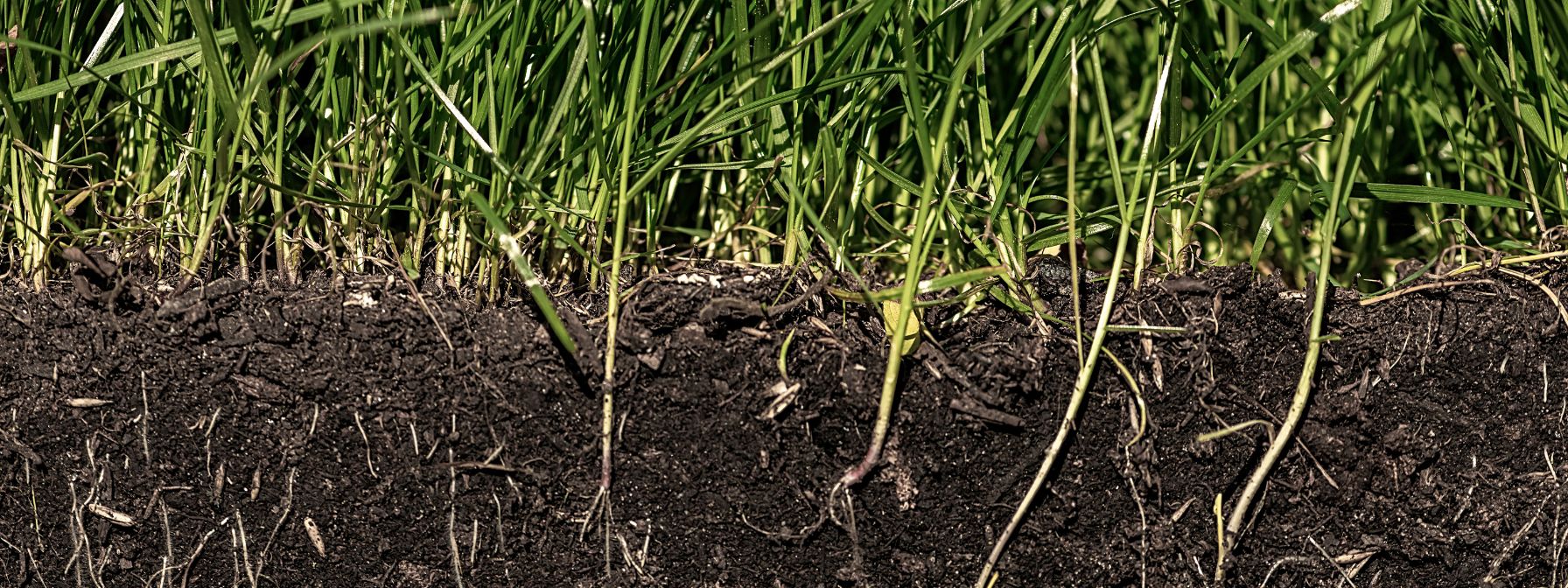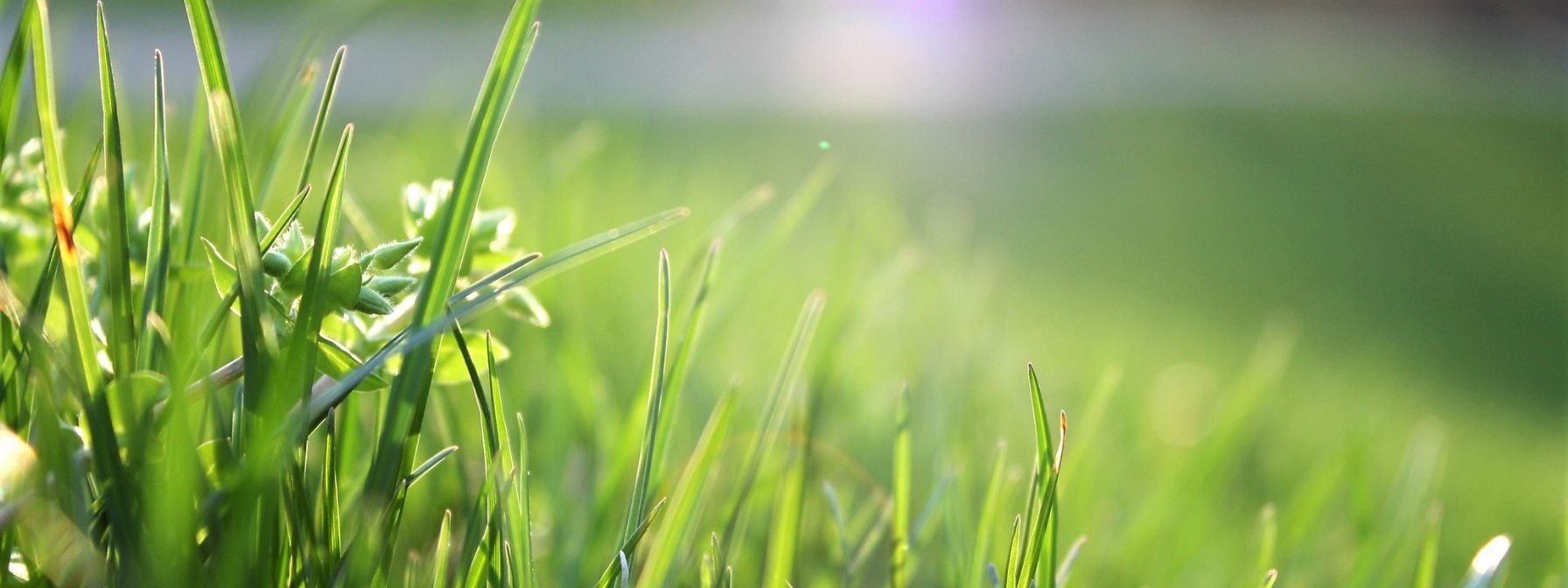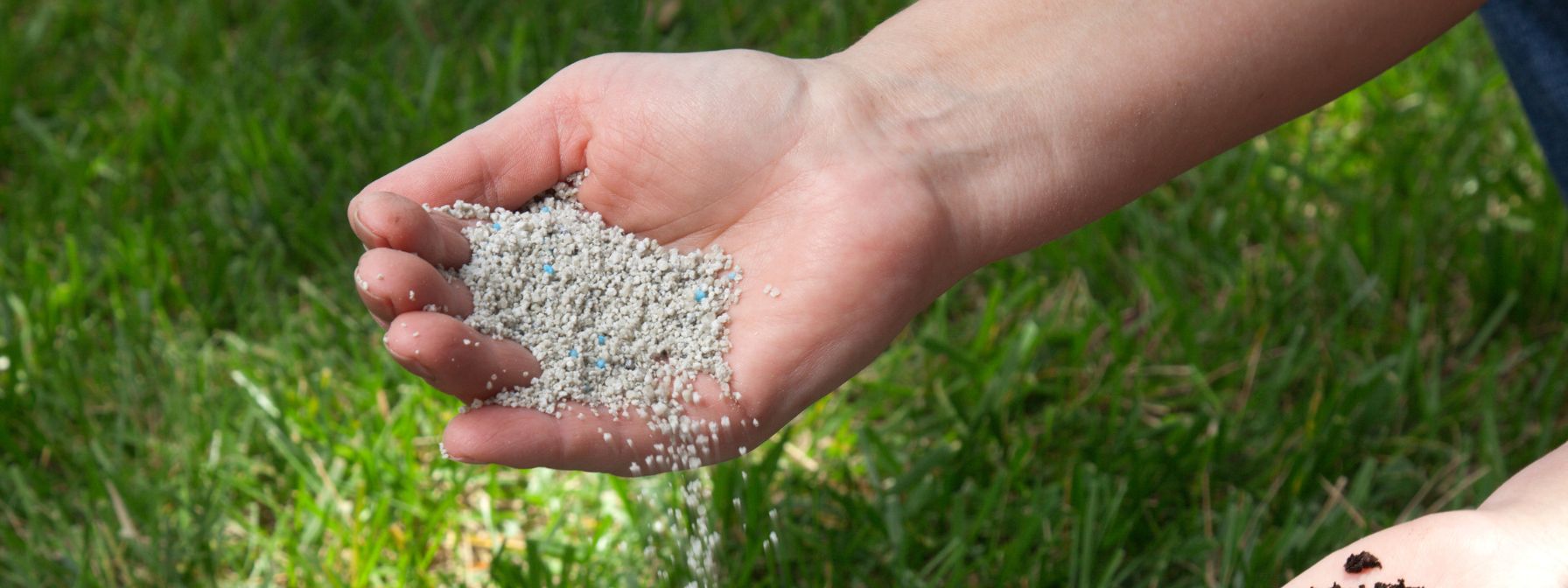
Nutrient Management Secrets for a Lush Lawn in Baltimore: A Complete Guide
Welcome to your comprehensive guide on achieving an immaculate, vibrant lawn in Baltimore through effective nutrient management. Whether you are a homeowner or property manager, you understand that a healthy turf starts beneath the surface. This guide explains how Baltimore’s unique soil composition, local climate, and precise fertilizer applications can transform your lawn into a resilient green oasis.

Understanding Baltimore's Unique Soil Composition for Effective Lawn Nutrition
Your lawn’s health begins with understanding Baltimore's soil, which affects nutrient availability and absorption. A soil test reveals essential factors like organic matter content, pH balance, and texture. Baltimore soils often combine clay and loam, which influence drainage and aeration, shaping nutrient dynamics in your turf.
Conducting a Soil Test to Reveal Your Lawn's Specific Nutrient Needs
A soil test is the cornerstone of targeted lawn care. By sending a soil sample to a certified laboratory, you learn the precise levels of nitrogen, phosphorus, potassium, and trace minerals. The report may indicate a need for extra phosphorus to develop stronger roots or additional potassium for disease resistance. This data enables you to customize your fertilizer strategy and avoid under- or over-application.
Addressing Common Soil pH Imbalances in Baltimore Lawns
Soil pH affects nutrient availability. Baltimore lawns may have slightly acidic or alkaline soil, locking nutrients away from plant roots if the pH falls outside the 6.0–7.0 range. Corrective measures—such as applying lime to raise pH or sulfur to lower it—are advised based on soil test results. Keeping the pH in the optimal range supports robust growth and minimizes issues like aluminum toxicity and micronutrient deficiencies.
Improving Soil Structure for Better Nutrient Absorption
Good soil structure is vital to effective nutrient management. In urban Baltimore, soil compaction is common; incorporating organic matter such as compost or well-rotted manure improves porosity, enabling roots to penetrate easily and absorb nutrients. These organic amendments also boost beneficial microbial activity that breaks down organic matter into plant-available nutrients, reducing reliance on synthetic fertilizers.
The Impact of Local Baltimore Climate on Soil Nutrients
Baltimore’s humid summers and chilly winters affect nutrient cycling. Temperature fluctuations influence microbial activity and organic decomposition. Hot, dry spells can make nutrients less available due to increased evaporation, while rainy periods may cause leaching. Adjusting nutrient management practices seasonally helps ensure your lawn receives the proper amount of nutrients at the right time.
Key Nutrients Your Baltimore Lawn Craves for Peak Health and Greenery

A lush lawn requires a balanced supply of macro- and micronutrients. Understanding the functions of each helps you design a targeted fertilization program for optimal growth and resilience.
Nitrogen's Role in Achieving Dense Green Growth in Baltimore Grass
Nitrogen stimulates vigorous growth and the lush green color of turf by promoting chlorophyll production. In Baltimore lawns, a controlled application of nitrogen results in uniform turf while preventing excessive top growth that could increase thatch buildup. It is critical to apply the recommended amounts determined by soil tests, since too much nitrogen can lead to weak growth and increased pest susceptibility.
Phosphorus for Strong Root Development in Local Lawns
Phosphorus is essential for developing deep, robust roots that effectively capture water and nutrients. This nutrient is particularly important for establishing new lawns and supporting mature turf under stress. Adequate phosphorus contributes to energy transfer within the plant and enhances resilience against environmental challenges. A deficiency can lead to stunted, brittle turf.
Potassium's Contribution to Lawn Resilience and Disease Resistance
Potassium helps regulate water uptake, photosynthesis, and stress tolerance. It strengthens grass to withstand drought, cold, and diseases by improving cell wall integrity. For Baltimore lawns, where heat and variable rainfall are common, potassium helps stabilize growth and moisture retention, reducing fungal disease incidence.
Recognizing Signs of Micronutrient Deficiencies in Your Turf
Micronutrients such as zinc, manganese, and iron play key roles in enzyme function and overall plant health. In Baltimore, discoloration, stunted growth, or unusual leaf patterns can signal deficiencies. For example, yellowing might indicate an iron or manganese shortage, while a purple tint may point to zinc deficiency. Early detection through careful observation and periodic testing allows for timely corrective measures.
Balancing Macronutrients for Comprehensive Nutrient Management for Lawns
Maintaining peak lawn health requires a synergistic balance of nitrogen, phosphorus, and potassium. An integrated nutrient management plan ensures that no single nutrient is over- or under-supplied. Using fertilizers with the proper NPK ratio tailored to Baltimore’s soil conditions optimizes both growth and longevity while preserving long-term soil fertility.
Selecting the Right Fertilizers for Your Baltimore Lawn's Success

Choosing the proper fertilizer is essential to implementing nutrient recommendations effectively. With many options available, it is important to understand the differences between organic and synthetic fertilizers, as well as the benefits of slow-release versus quick-release formulas.
Choosing Between Organic and Synthetic Fertilizers for Baltimore Conditions
Organic fertilizers, made from plant or animal matter, offer the dual benefits of delivering nutrients and improving soil structure. In contrast, synthetic fertilizers provide concentrated, rapid nutrient boosts. Many Baltimore homeowners now favor organic options because they enhance microbial activity, reduce chemical runoff, and align with sustainable landscaping. Often, a balanced approach incorporating both types yields the best long-term results.
Understanding Slow-Release Versus Quick-Release Fertilizer Benefits
Slow-release fertilizers provide a steady nutrient supply over time, reducing leaching and promoting long-term soil health—ideal for Baltimore’s variable weather. In contrast, quick-release fertilizers deliver an immediate nutrient boost, which can be useful for rapid recovery from stress. Knowing when to use each type helps maintain consistent nutrient availability for your turf.
Reading Fertilizer Labels Correctly for NPK Ratios
Fertilizer labels indicate nutrient content through NPK ratios (e.g., 10-5-5 indicates 10% nitrogen, 5% phosphorus, and 5% potassium). Matching these ratios to your lawn’s specific needs based on soil tests is crucial for optimal growth. Regularly reviewing labels and adjusting your fertilizer choices in response to changing soil conditions ensures steady, healthy turf development.
Proper Application Methods for Maximizing Nutrient Uptake on Baltimore Lawns
Even high-quality fertilizer cannot deliver results without proper application. Precision and consistency in application methods are critical to ensure even nutrient distribution and efficient uptake by the roots.
Calibrating Your Spreader for Accurate Fertilizer Distribution
Ensure your spreader is properly calibrated to distribute fertilizer evenly. An uncalibrated spreader may result in patchy growth with some areas receiving too much nutrient and others too little. Follow the manufacturer’s guidelines and adjust settings based on your fertilizer’s characteristics and lawn area.
Optimal Timing for Fertilizer Application Throughout Baltimore's Seasons
Fertilizer timing should reflect Baltimore’s seasonal cycles. Early spring applications help awaken dormant turf, while summer applications support recovery from heat stress. In autumn, fertilizers rich in phosphorus and potassium promote robust root establishment for winter hardiness. Timely applications ensure nutrient availability aligns with the lawn’s needs throughout the year.
Watering Practices Post-Fertilization for Nutrient Activation
Proper watering after fertilization dissolves nutrients and moves them to the plant roots. In Baltimore’s climate, a deep, infrequent watering schedule after fertilization minimizes runoff and encourages deeper root growth. However, avoid overwatering, which can leach nutrients and encourage fungal diseases.
Avoiding Common Fertilization Mistakes Harmful to Baltimore Lawns
Over-application, uneven distribution, or poor timing can stress your lawn and reduce fertility. Excess fertilizer causes nutrient burn and susceptibility to pests, while under-application leaves the turf undernourished. Always adhere to manufacturer guidelines, properly calibrate your equipment, and consider weather conditions when planning applications.
Safe Handling and Storage of Lawn Fertilizers
Safety is essential when working with fertilizers. Always follow label instructions, use protective gear, and store fertilizers in a cool, dry place away from children and pets. Proper handling and storage not only preserve the quality of the product but also contribute to an overall safe and eco-friendly lawn care strategy.
Seasonal Nutrient Planning for Year-Round Lawn Vibrancy in Baltimore
Year-round success in Baltimore lawns relies on planning fertilizer applications to match seasonal changes. Customized nutrient plans provide immediate benefits and support long-term resilience.
Spring Nutrient Boost to Awaken Your Baltimore Lawn
As winter recedes, early spring applications focus on nitrogen for vigorous green-up and phosphorus to stimulate root development. Incorporating compost can further enhance soil structure and microbial activity, laying the foundation for a resilient lawn.
Summer Feeding Strategies for Stress Tolerance in Maryland Heat
During hot summers, a measured, slow-release fertilizer helps sustain growth without overwhelming the soil. Emphasizing potassium improves water-use efficiency and stress tolerance, while minimal nitrogen prevents turf burning. Timed irrigation post-application supports nutrient uptake and recovery.
Autumn Nutrient Application for Winter Hardiness and Spring Vigor
Autumn applications prepare your lawn for winter dormancy and promote early spring recovery. A balanced mix of nitrogen, phosphorus, and potassium—especially potassium for cold tolerance—combined with organic amendments, enhances root resilience against frost and freezing conditions.
Adjusting Nutrient Management for Lawns During Drought or Excessive Rain
Baltimore weather can be unpredictable. During drought, supplement with water-soluble nutrients absorbed quickly by stressed roots while reducing overall fertilizer rates. In periods of heavy rain, use slow-release fertilizers and time applications during drier intervals to minimize leaching.
Creating a Long-Term Baltimore Lawn Nutrient Calendar
Develop a yearly nutrient calendar that outlines fertilizer applications, soil tests, aeration, and dethatching. By tracking these activities and observing changes in soil conditions, you can adjust your strategies over time, ensuring continuous lawn vibrancy and resilience.
Baltimore Lawn Nutrient Calendar – Seasonal Care Guide
To keep your lawn healthy and resilient through Baltimore’s varied climate, follow this seasonal nutrient management plan:
Spring (Early to Mid-March)
Nutrient Focus: Nitrogen & Phosphorus
Key Activities: Soil testing and compost application
Recommended Fertilizer: Slow-release organic fertilizer
Summer (Early June to August)
Nutrient Focus: Potassium
Key Activities: Irrigation and stress management
Recommended Fertilizer: Slow-release, low-nitrogen formula
Autumn (Mid-September to October)
Nutrient Focus: Balanced N–P–K (Nitrogen, Phosphorus, Potassium)
Key Activities: Aeration and overseeding
Recommended Fertilizer: Balanced synthetic or organic blend
Winter (Late November to December)
Nutrient Focus: General maintenance
Key Activities: Minimal feeding and protective measures
Recommended Fertilizer: Minimal application, soil amendments
Frequently Asked Questions
Q: How often should I conduct a soil test for my Baltimore lawn?
A: Conduct a soil test at least once a year, ideally during early spring or fall, to monitor pH levels, nutrient deficiencies, and overall soil health so you can adjust your fertilization strategy accordingly.
Q: What are the risks of over-fertilization on my lawn?
A: Over-fertilization may cause nutrient burn, excessive thatch buildup, and increased vulnerability to pests and diseases, and can lead to runoff that pollutes local waterways. Always follow soil test recommendations and apply fertilizer precisely.
Q: Can organic fertilizers completely replace synthetic options in Baltimore lawns?
A: Organic fertilizers improve soil structure and provide a slow, steady nutrient release, while synthetic fertilizers offer rapid nutrient boosts when needed. Often, a balanced integration of both types produces the best long-term results with environmental sustainability.
Q: What steps can I take to improve nutrient uptake in compacted soils?
A: Regularly aerate your lawn, apply organic matter like compost, and dethatch as needed. These practices improve soil structure, allowing roots to penetrate deeper and absorb nutrients more efficiently.
Q: How does local climate affect my lawn's nutrient management?
A: Baltimore’s humid summers and variable rainfall impact nutrient availability by affecting microbial activity and causing leaching. Adjust your application methods and fertilizer types to match climatic conditions for optimal nutrient retention.
Q: What is the importance of integrated pest management (IPM) in nutrient management?
A: IPM minimizes the use of chemical pesticides by controlling pests through natural methods. This reduces stress on your turf, supports strong root development, and enhances overall nutrient uptake.
Q: How do I determine the right NPK ratio for my specific Baltimore grass variety?
A: The ideal NPK ratio depends on your soil test results and the specific requirements of your grass species. Consult local lawn care professionals or extension services for tailored recommendations.
Final Thoughts
A lush, healthy lawn in Baltimore starts with understanding your soil and managing nutrients the right way. At HMD Landscaping, we take the guesswork out of lawn care with expert soil analysis, seasonal planning, and precise nutrient applications tailored to your property. Our proven strategies help your turf thrive in Baltimore’s urban environment while promoting long-term sustainability. Let HMD Landscaping guide you toward a greener, stronger lawn—built on knowledge, care, and professional expertise.
